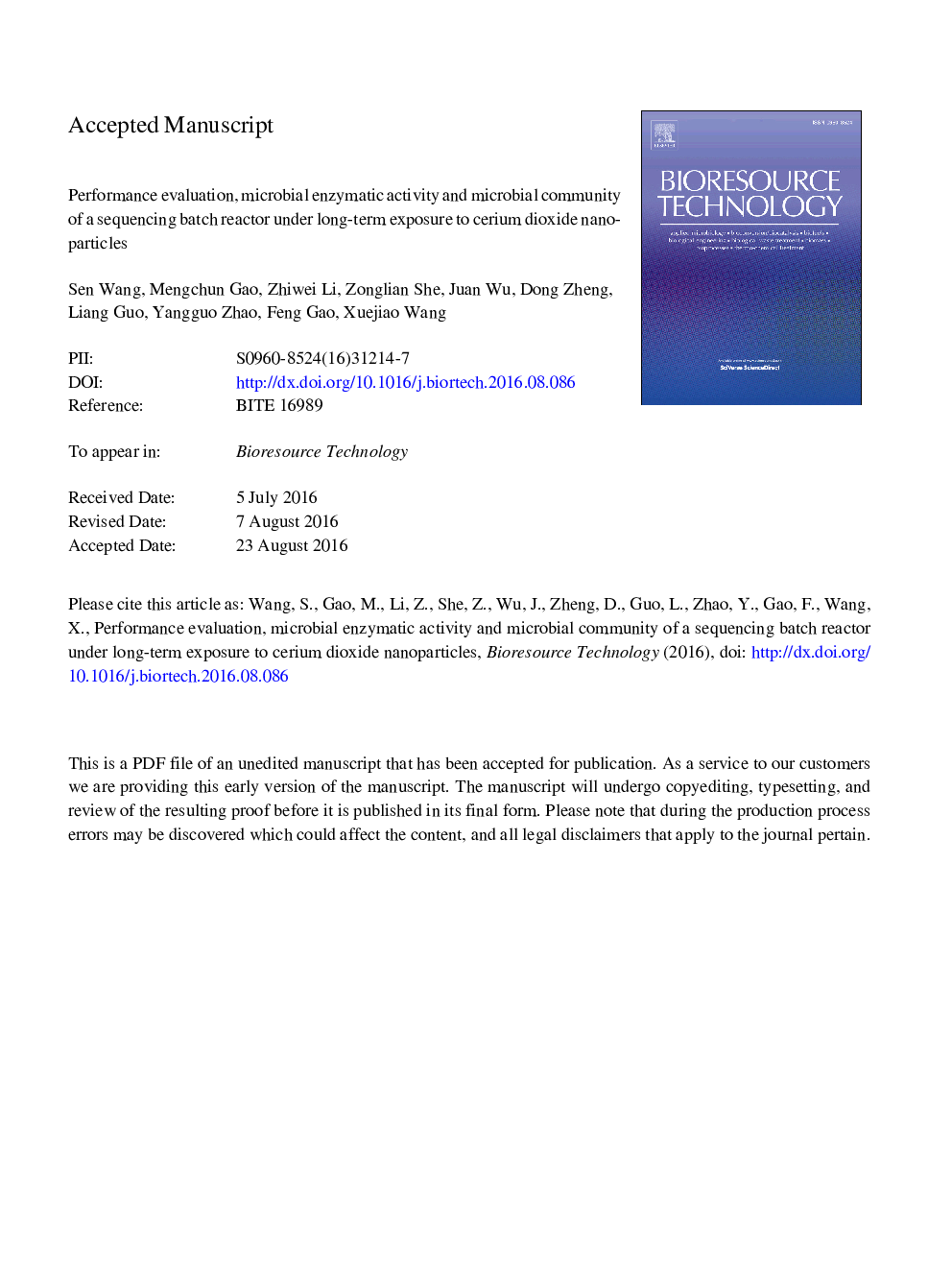| Article ID | Journal | Published Year | Pages | File Type |
|---|---|---|---|---|
| 7069589 | Bioresource Technology | 2016 | 34 Pages |
Abstract
The performance, microbial enzymatic activity and microbial community of a sequencing batch reactor (SBR) were investigated under long-term exposure to cerium dioxide nanoparticles (CeO2 NPs). The COD removal kept a stable value at 0-5Â mg/L CeO2 NPs and then decreased at 10-60Â mg/L CeO2 NPs. The NH4+-N removal had no obvious changes at 0-30Â mg/L CeO2 NPs, and a minor decrease appeared at 60Â mg/L CeO2 NPs. Compared to 0Â mg/L CeO2 NPs, the phosphorus removal showed a decrease at 2Â mg/L CeO2 NPs and slightly increased at 5-60Â mg/L CeO2 NPs. The nitrogen and phosphorus removal rates had similar variation trends to the microbial enzymatic activities. The variations of reactive oxygen species (ROS) and lactate dehydrogenase (LDH) indicated that high CeO2 NPs concentration could result in the biotoxicity to activated sludge. The presence of CeO2 NPs had obvious effect on the microbial richness and diversity of activated sludge.
Related Topics
Physical Sciences and Engineering
Chemical Engineering
Process Chemistry and Technology
Authors
Sen Wang, Mengchun Gao, Zhiwei Li, Zonglian She, Juan Wu, Dong Zheng, Liang Guo, Yangguo Zhao, Feng Gao, Xuejiao Wang,
